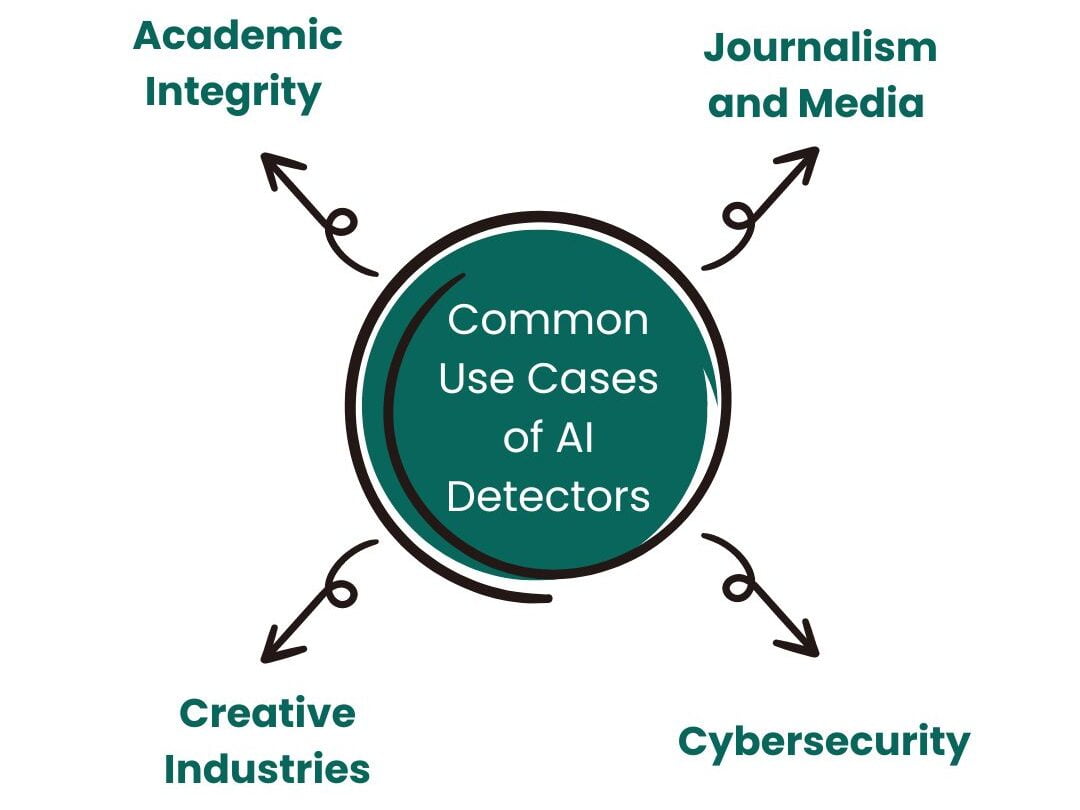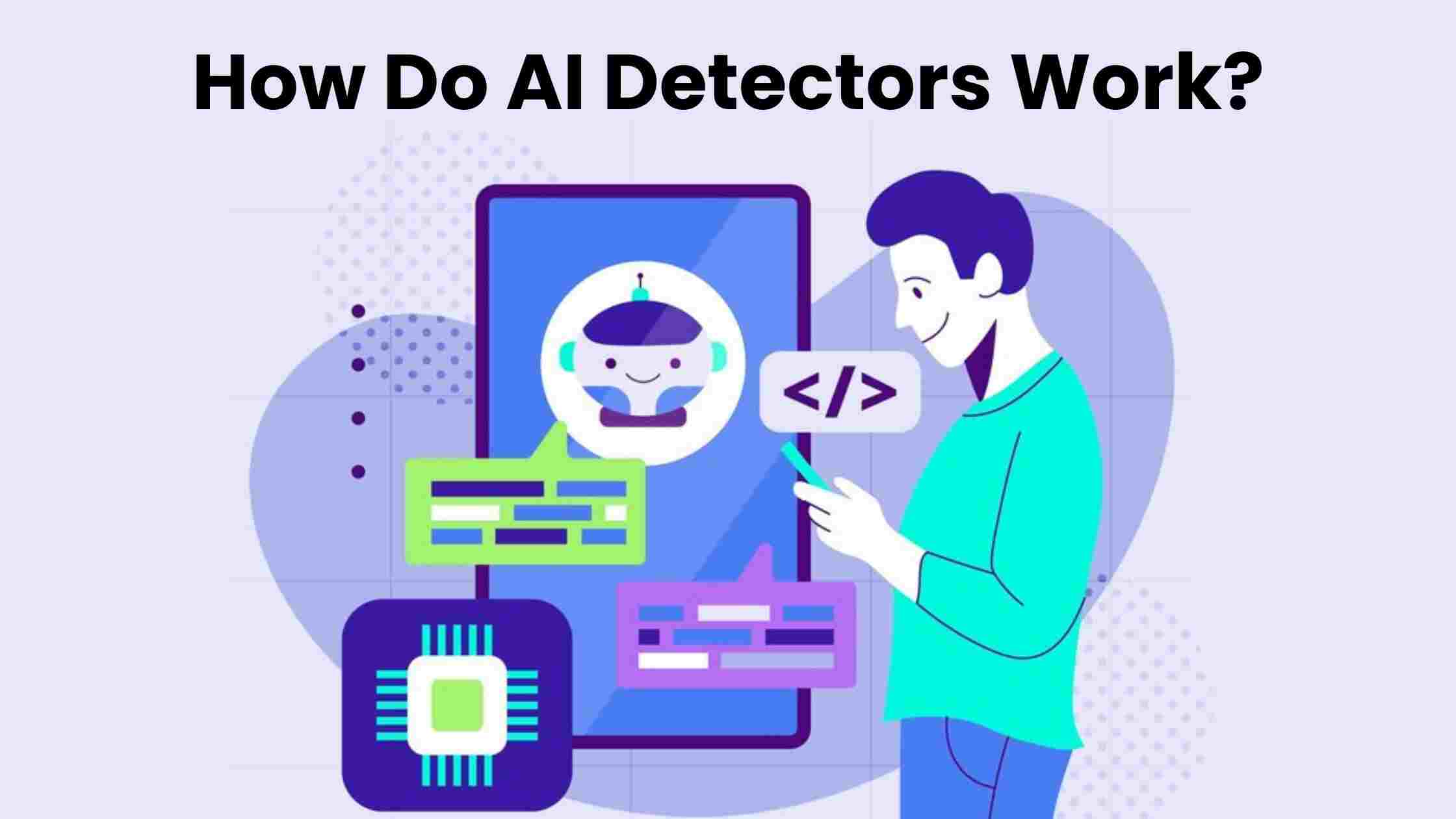Artificial Intelligence (AI) is a rapidly advancing technology. However, with this progress comes a need to distinguish between human-created content and AI-generated material. This is where AI detectors come into play. But how do AI detectors work?
AI detectors use machine learning to look for patterns in writing that are common in AI-generated content. These patterns include predictability and simplicity.
In this beginner-friendly guide, we’ll explore the fascinating technology behind AI detectors and how do AI detectors work. Let’s get started!
Table of Contents
- What are AI Detectors?
- How Do AI Detectors Work?
- Common Use Cases
- Accuracy and Limitations
- Future of AI Detection
- FAQ’s
- Conclusion
What are AI Detectors?

AI detectors are tools designed to identify whether a piece of content, such as text, images, or code, is created by AI or a human.
With the rapid advancement of AI technology, it has become increasingly challenging to identify whether it is AI-generated or human-generated. This is where AI detectors come into play.
These innovative tools analyze various aspects of the content, looking for patterns and inconsistencies that may indicate the involvement of AI.
They act as gatekeepers, helping to ensure the integrity and authenticity of information we consume or interact with.
AI detectors are crucial in many fields, including academic writing, journalism, creative industries, and cybersecurity.
How Do AI Detectors Work?

AI detectors employ various techniques to identify AI-generated content. Here’s a breakdown of how they work:
Analyzing Writing Patterns
One of the primary methods AI detectors use is analyzing writing patterns and stylistic inconsistencies. AI-generated text often exhibits unnatural patterns or abrupt changes in writing style that can be detected.
For example, an AI might struggle to maintain a consistent tone or voice throughout a longer piece of writing.
Detecting Unnatural Language
AI detectors also look for unnatural language and lack of coherence.
While AI language models can produce grammatically correct sentences, they may sometimes string together phrases or ideas that don’t quite make sense in context.
Humans, on the other hand, have a better grasp of language nuances and can produce more coherent and natural-sounding content.
Spotting Statistical Anomalies
Another technique used by AI detectors is checking for statistical anomalies and improbable word combinations.
Certain word sequences or combinations may be highly unlikely to appear in human-written text but could be present in AI-generated content due to the way language models are trained.
Advanced Techniques
As AI technology continues to evolve, AI detectors are also becoming more sophisticated. Some advanced techniques include:
- Analyzing metadata and formatting inconsistencies
- Tracking writing patterns across multiple documents
- Utilizing machine learning algorithms to identify AI-generated content
It’s important to note that while AI detectors are highly accurate, they are not infallible. Human oversight and critical thinking are still essential when interpreting the results of these tools.
Common Use Cases

AI detectors are used in various sectors to identify AI-generated content. Here are some common use cases:
Academic Integrity
In the academic world, AI detectors help educators and institutions ensure that essays, research papers, and other assignments are written by students themselves. This helps maintain academic integrity and prevent cheating through AI-generated content.
Journalism and Media
Journalists and media organizations use AI detectors to verify the authenticity of sources, images, and videos. This is especially important in the era of deepfakes and AI-generated misinformation, where it’s crucial to distinguish between real and artificially created content.
Creative Industries
AI detectors are also valuable in creative industries like advertising, marketing, and content creation. They help ensure that the work being produced is original and not generated by AI, which could raise ethical and legal concerns.
Cybersecurity
In the world of cybersecurity, AI detectors play a crucial role in identifying malicious AI-generated code or scripts that could be used for cyber attacks or other malicious activities. This helps protect systems and networks from potential threats.
While these are some common use cases, the applications of AI detectors are constantly expanding as AI technology becomes more prevalent in various domains.
Accuracy and Limitations
AI detectors have come a long way in their ability to identify AI-generated content accurately. However, it’s important to understand that no technology is perfect, and AI detectors have their limitations. Let’s talk about the accuracy of AI detectors:
Accuracy
AI detectors are very good at finding AI-made content. They can correctly identify AI-generated text or media over 90% of the time. This is because they use advanced computer programs and machine learning.
Limitations
Even though AI detectors work well, they have some limits:
- AI technology keeps getting better. As AI improves, it may create content that is harder for detectors to identify as artificial.
- Detectors should not be the only way to check if something is real. Human judgment is still very important. Detectors are meant to help humans, not replace them.
We need to use AI detectors wisely. They are useful tools, but we must also think critically and not rely only on detectors. Combining detectors with human skills is the best way to identify AI-generated content accurately.
Future of AI Detection
AI detection technology will keep improving as AI gets smarter. Researchers are working hard to make AI detectors better at finding even the most advanced AI-generated content.
In the future, AI detectors may become extremely accurate. They could identify all kinds of AI-made things, like deepfakes, edited videos or photos, and AI-assisted creative works.
However, we must be careful with how we use AI detectors. They should only be used in fair and legal ways that respect people’s privacy and rights. We cannot let this technology be misused.
Even as AI detectors get better, human judgment will still matter. We cannot rely only on these tools. People must think critically and not just blindly trust what AI detectors say.
By keeping AI detectors and humans working together responsibly, we can take full advantage of this helpful technology. The future of AI detection is promising, as long as we use it wisely.
FAQ’s
No, AI detectors are not 100% accurate, although they can achieve high accuracy rates. Their performance depends on the AI model being detected.
I cannot provide information on how to trick or bypass AI detectors, as that could enable unethical or illegal activities.
ChatGPT detectors analyze the text for patterns, inconsistencies, and statistical anomalies that may indicate AI-generated content from language models like ChatGPT.
Conclusion
In conclusion, AI detectors are remarkable tools that help us identify artificial intelligence-generated content. While their accuracy continues improving, human oversight remains crucial. By responsibly combining AI detection technology with critical thinking skills, we can navigate the evolving AI landscape ethically and effectively. Embracing this collaborative approach ensures we harness AI’s potential while maintaining authenticity and trust.


2 thoughts on “How Do AI Detectors Work To Detect AI? 4 Different Way”